By Rick VanSickle
Attempting the wine version of reaching back into the rarities, oddities, and oldies from that dusty record collection in the basement, I found some interesting results recently.
Note, also in this Niagara Wine Report: Our picks of the Niagara wines being released at Vintages stores Saturday, including Flat Rock Cellars Rusty Shed Chardonnay and bubbles from Chateau des Charmes.
While vinyl records are built to last forever, wine is most certainly not. It’s a tricky proposition to find that sweet spot, the perfect drinking window when everything comes into harmony, eliciting that ah-ha moment some of us strive for, before it starts fading into oblivion.
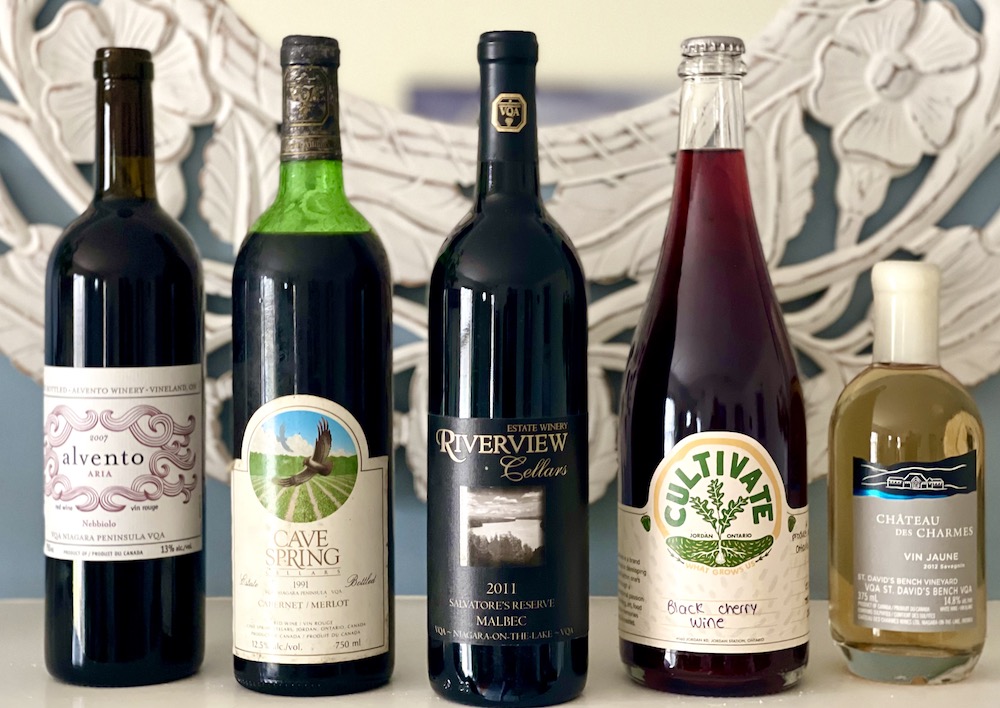
February is the perfect time to give your cellar the once over and cull the wines you feel should be consumed before you miss that window of opportunity or the ones that pique your curiosity because you just don’t know what to expect. That’s exactly what I did, selecting a range of wines that I felt should be opened within the next year and a few wines that should be opened immediately for various reasons.
The Niagara wines I uncorked in the past few weeks run the gamut of styles, and while some surprised, others not so much and a few were in between. I’ve chosen five wines that impressed me — three reds, one “yellow” wine, and one fruit wine — that come under the rarities, oddities, and oldies categories to discuss in this post, all of interest and one simply stunning.
The big surprise
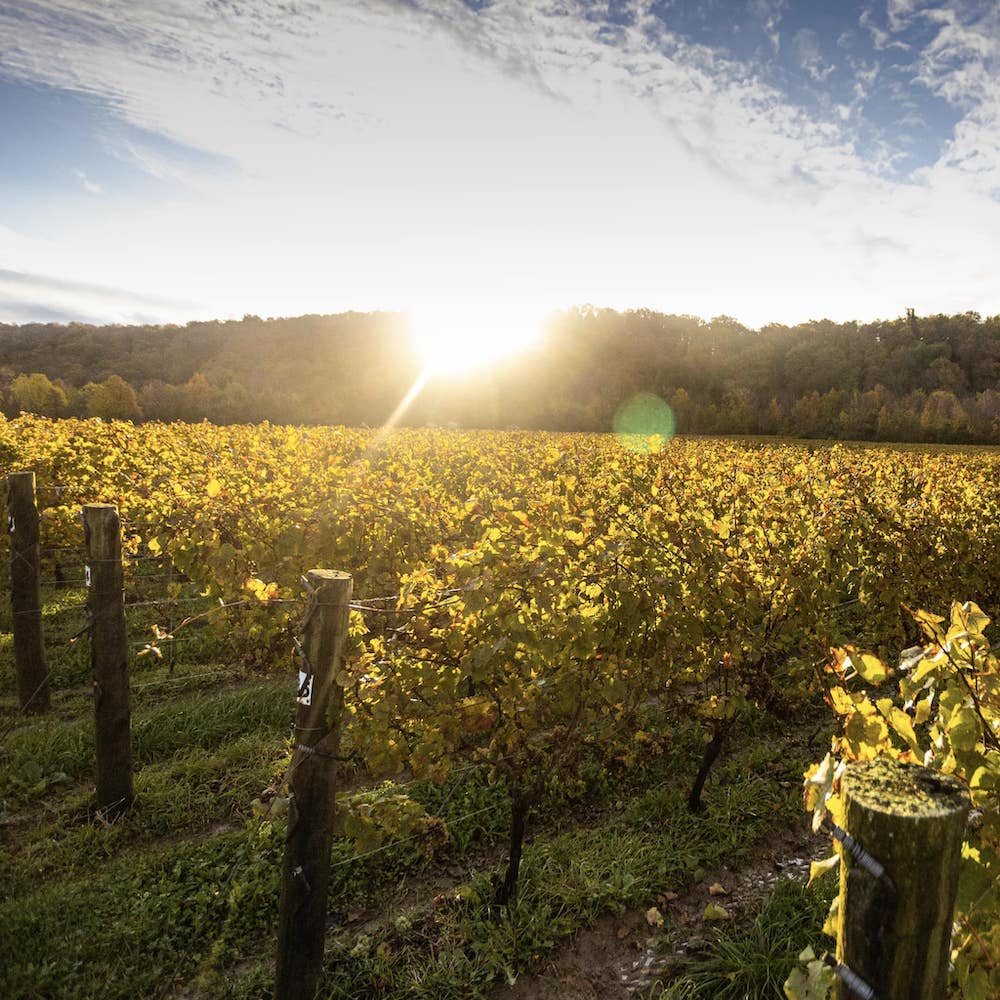
Starting with the wine deemed least likely to succeed, the first wine I opened was the Cave Spring Cellars Cabernet Merlot 1991, all sourced from the CSV Vineyard (above). Just look at the bottle (below), the low ullage, the scuffed label, the blackened cork (very top photo), that surprisingly came out of the bottle 100% intact with the trusty Durand cork puller. Still, hopes were not high for this bottle that I acquired nearly a decade ago, even though it came from a collector known to take very good care of his cellared wines.
I have no information on the 1991 vintage, my own vintage charts start in 1998, so I leaned on Vineland Estates winemaker Brian Schmidt for his knowledge. As it turns out, Schmidt only arrived at Vineland from B.C. on Sept. 11, 1991, just in time for the harvest. “It was an early harvest as it was hot and my brother (Allan Schmidt, winemaker at Vineland at the time, now president of the estate) needed help so I flew out,” said Schmidt. “I was young, super naïve and remember Eddie Gurinskas (who founded Lakeview Cellars in 1991) showing me the reds. They were stunningly beautiful.”
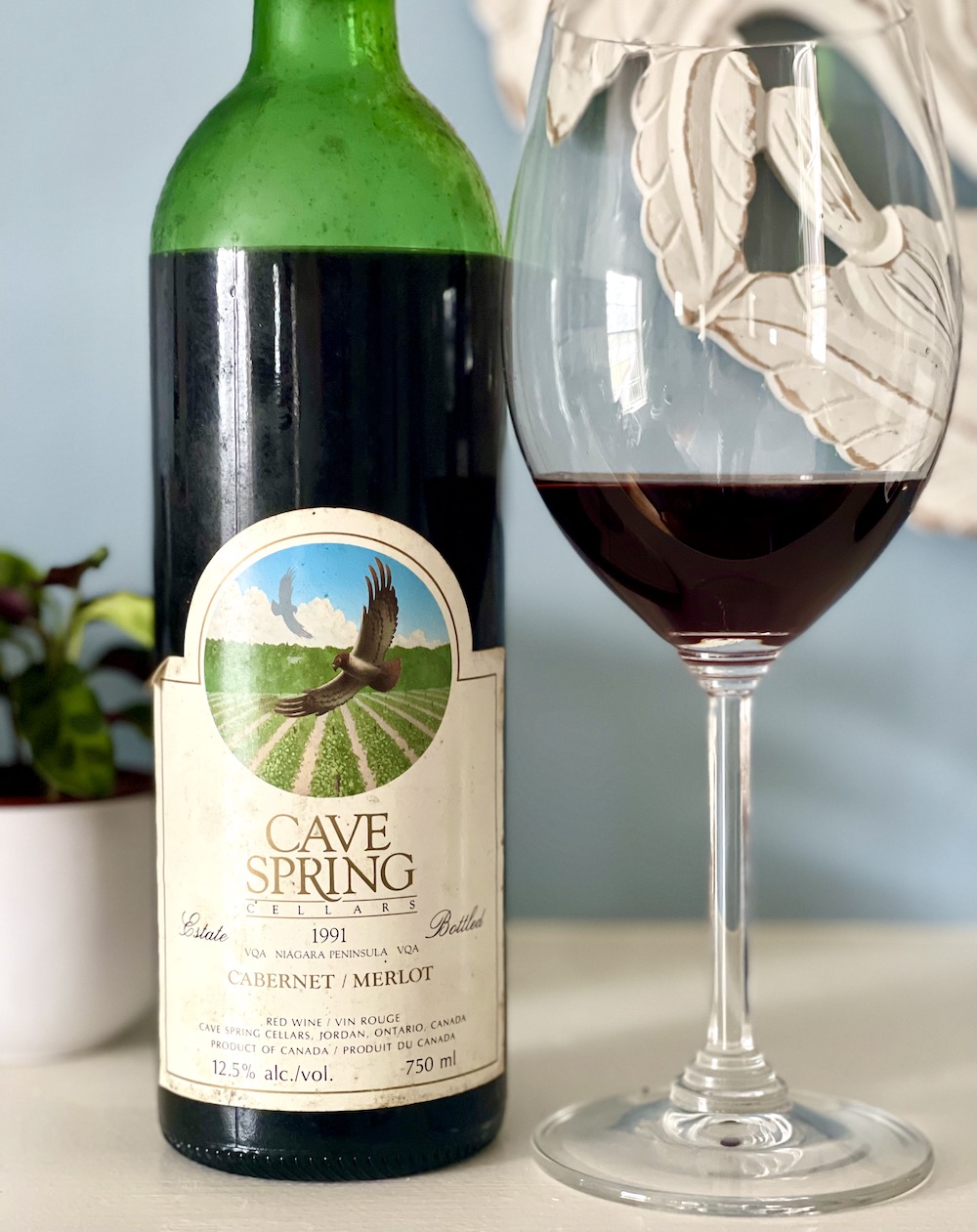
Schmidt worked that 1991 harvest for Vineland (he never left, by the way) and recalls it was hot and dry. “Winemakers didn’t know how to handle that fruit,” he said. “It was a totally different way of fermentation from today.” He said that generally, winemakers made red Bordeaux blends like they made Pinot Noir in a much lighter style.
Which makes sense, as I tasted this Cave Springs Cabernet Merlot from 1991. It poured such a vibrant red colour in the glass, which just isn’t normal for a 33-year-old Niagara red wine. Usually you see some bricking, some signs of age, and this did not. And the aromas, oh, my, what a beautiful wine despite the low-shoulder ullage and blackened cork. Such lovely perfume with notes of fresh wild raspberries, cherries, cloves, integrated herbs, and sweet cedar notes. It was lifted and vibrant on the palate with soft, silky tannins, ripe red berries, dark chocolate, pure and harmonious with a bright finish and just a hint of bitterness emerging. I was gobsmacked with this wine from the early days of Niagara wines and would never guess the age if it was tasted blind. As Schmidt explains above, it was a lighter-bodied red but packed with flavours and nuance that had shed any aggressive tannins that might have been there while maintaining freshness from all that juicy acidity the Bench is famous for. The bottom of the bottle had a fair amount of sediment, but easily decanted out. It was a real treat to experience this wine.
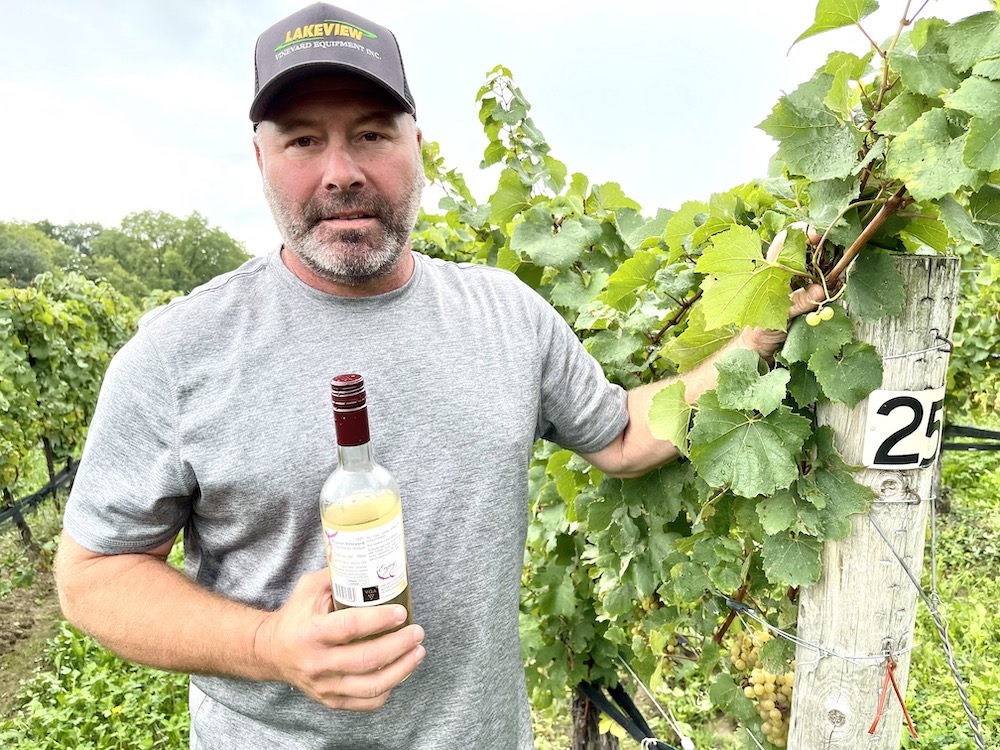
Fun fact: Schmidt (above in the Mission Vineyard) arrived in 1991 and never left, eventually taking over winemaking from his brother. He also purchased Eddie Gurinskas’s home vineyard a few years ago and makes wines under the Circle of Friends Mission Vineyard label. The tiny Mission Vineyard was planted by Gurinskas for personal use, and he still lives in the house on the property. Schmidt planted one acre of Cabernet Franc to various clones and rootstocks, and revamped the three acres of Chardonnay Musque, which was the first wine he has made from his new vineyard.
Niagara Nebbiolo done right
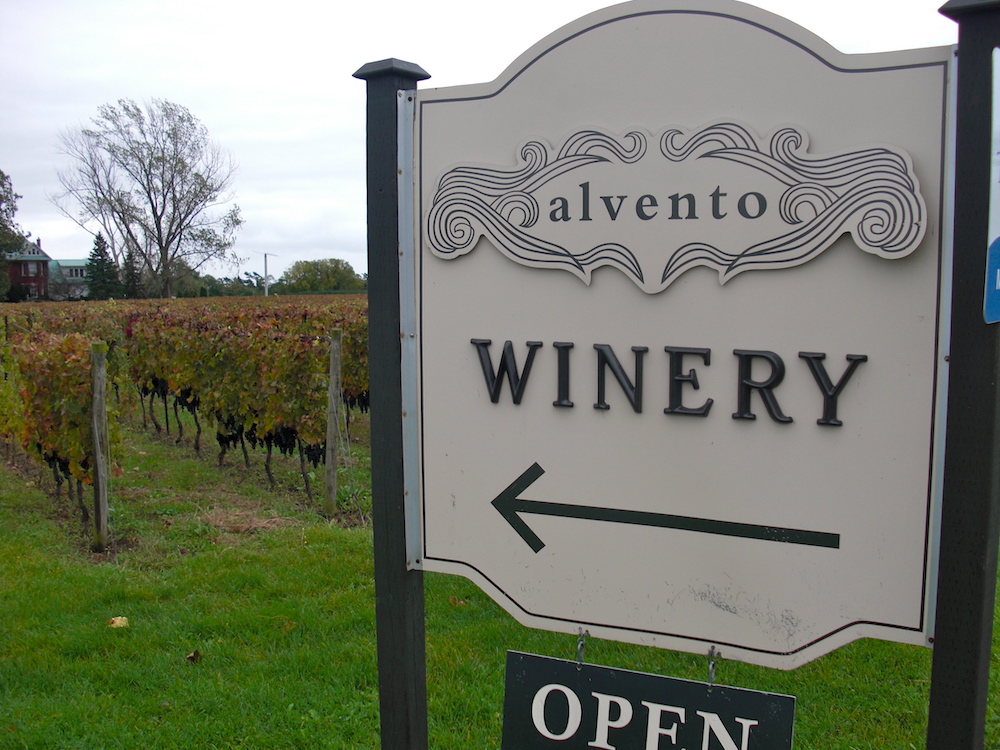
These older bottles from the short-lived but impactful Alvento winery, a cult favourite for Right and Left Bank inspired Niagara reds, Viognier and Nebbiolo, seem to pop up on a regular basis.
The bottle I opened for this post was the Alvento Aria 2007, a 100% Nebbiolo crafted by former winery owner Bruno Moos from the very warm 2007 vintage. Not a lot of wineries were growing or making this tricky Pinot Noir-like superstar made famous in the Italian vineyards of Barolo back in 2007.
Ridgepoint winery’s Mauro Scarsellone (below) is believed to be the first to plant Nebbiolo way back in 1999 after receiving cuttings from pioneering grape grower Gunther Funk. It was the first Nebbiolo wine made in Niagara (maybe Canada?) at the time. Moos was next with his first vintage in 2006, and other than a Nebbiolo made by Muscedere in Lake Erie North Shore, I am not aware of another example made in Ontario or Canada, for that matter.
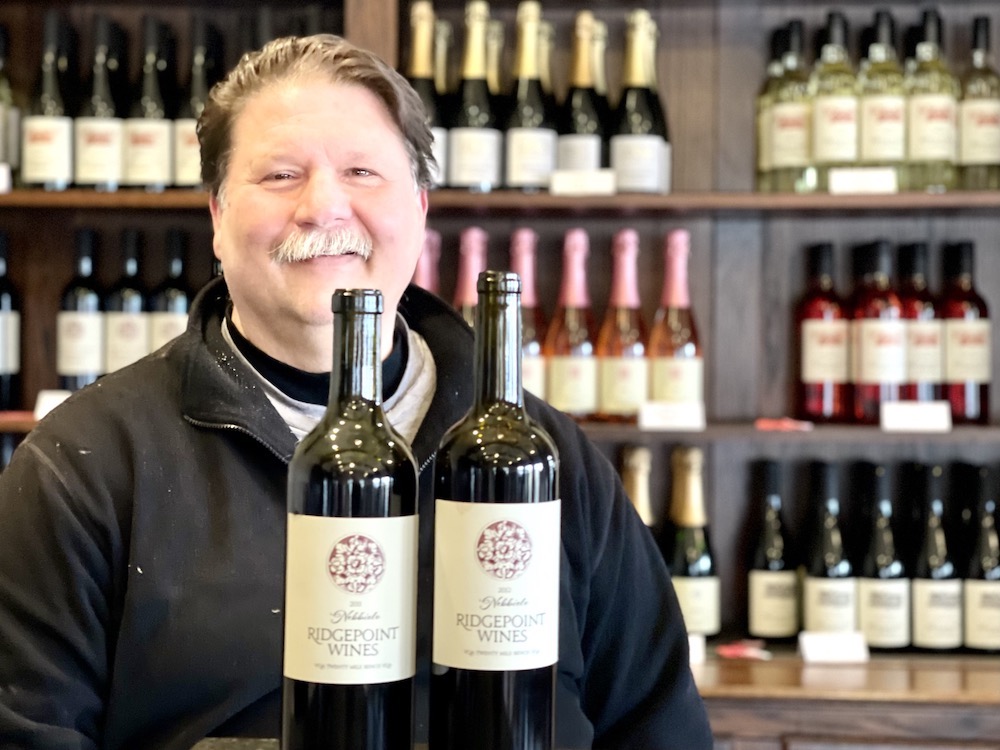
Sadly, the Alvento winery was short lived after a 50-50 partnership went sour and a court ordered Moos, his wife Elyane and the partner to sell the winery. What was left behind was a spectacular body of work that flew under the radar at the time but has proven to be some of the most ambitious red wines (and Vio) being made at the time.
Bruno and Elyane Moos made Alvento, which is still in existence under new owners, important to the mosaic that is Niagara. They embodied all that is good about winemaking in Niagara: Hard working, salt of the earth and genuine people making wines for all the right reasons. They believed in the region, they believed in quality and didn’t sacrifice that for the immediate reward of money coming through the door. Which just may have led to Alvento’s demise.
Getting Nebbiolo planted in Niagara was a difficult chore for Moos. First it was a challenge sourcing decent Nebbiolo vines with the first plantings suffering from a devastating virus. He didn’t give up. He replanted with better vines and his first Nebbiolo, Alvento Aria 2006 was a lovely wine with cherry fruit and earthy-leather flavours that was true to the Piedmont style. But it is the 2007 that was the real blockbuster and is still going strong, if not better, 17 years later.
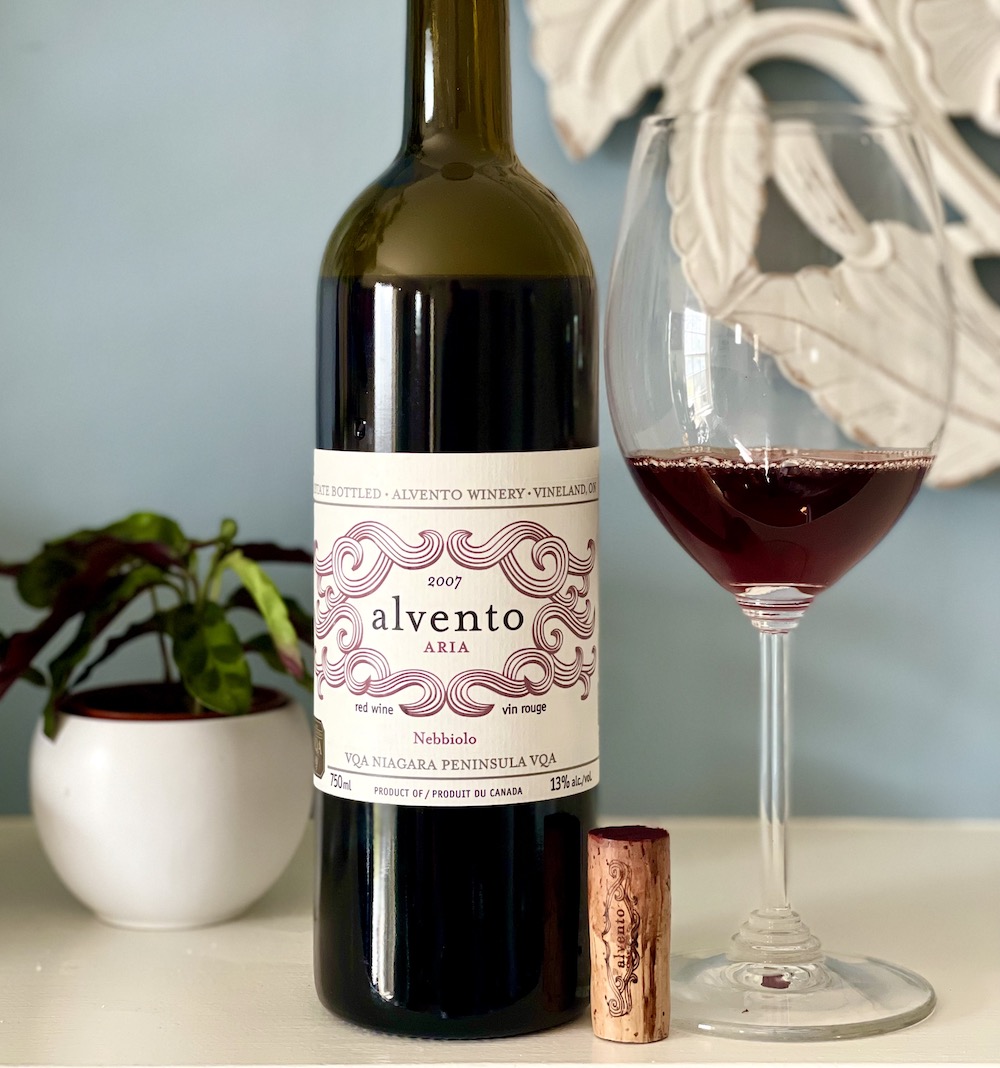
The Alvento Aria 2007 ($35) spent 18 months in Burgundy oak barrels, 70% of which was new oak. This was absolutely gorgeous with a profoundly perfumed nose of ripe red berries, foraged mushrooms, roasted meats, graphite, cigar box cedar, lavender, toasted vanilla and black currant preserves. With 17 years of aging, the aggressive tannins have melted, leaving a silky feel on the palate that enables the rich, dense, cherry compote, black raspberries, and currants to emerge to the front with earthy/savoury notes, anise, integrated spice and juicy acidity on the finish keeping this alive and still developing. If you have any of Aria in your cellar, you are in for a rare treat.
Hello Malbec, my old friend
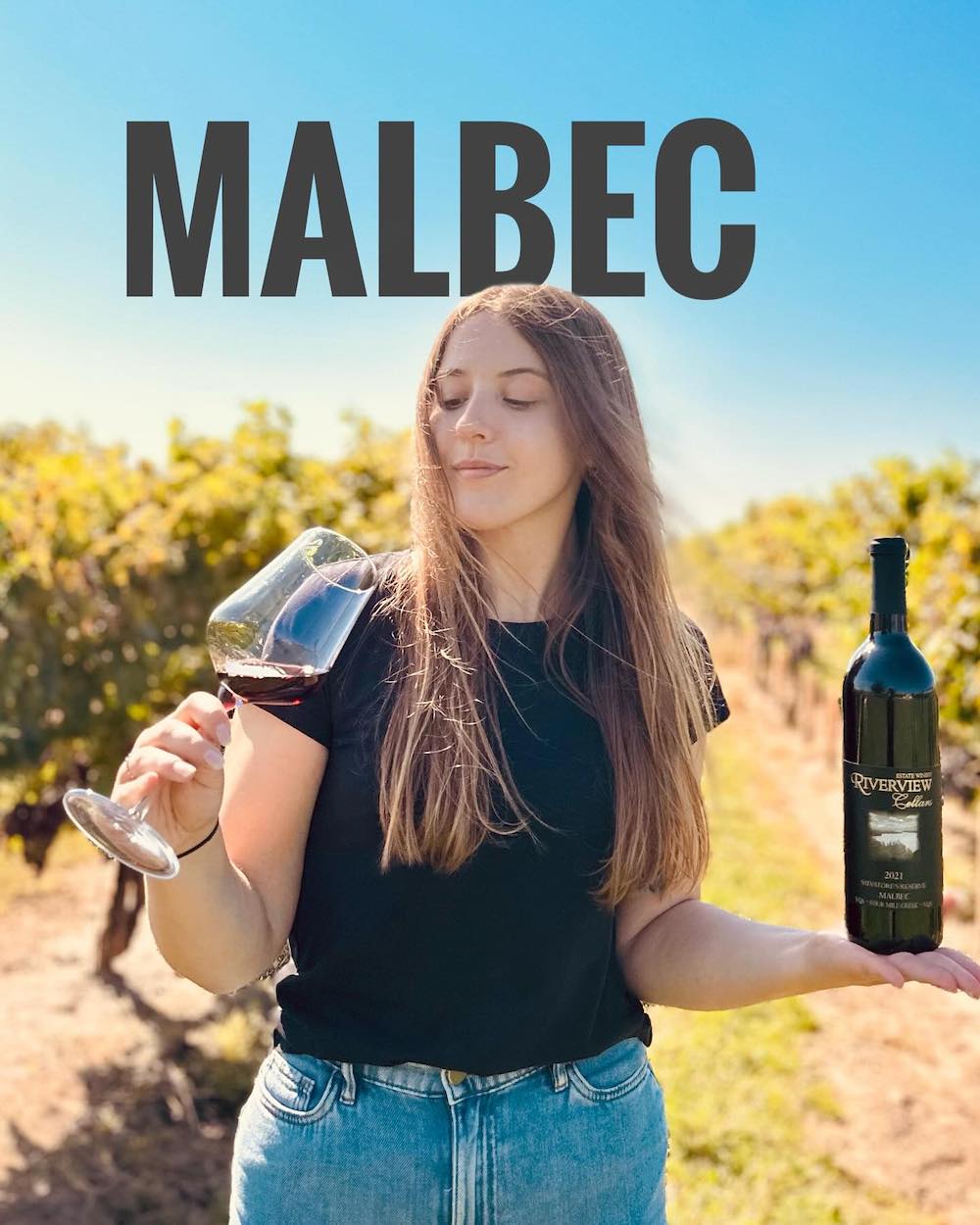
Malbec is planted more often in Niagara than you likely think. A lot of it is blended in Bordeaux-style red wines, but a few, such as Lakeview, Niagara College, Peninsula Ridge, Legends, Big Head, Stratus, Inniskillin, Hidden Bench and others, make (or made) it into a single-variety wine with some success. I cracked open the Riverview Cellars Salvatore’s Reserve Malbec 2011 that I’ve had populating my cellar for a while and was impressed with how it has matured so nicely.
Malbec is a purple grape variety and tends to have an inky dark color and robust tannins. It’s probably most famous as one of the six grapes allowed in the blend of Bordeaux wines or as a stand-alone wine in Cahors in the southwest of France. It is also the superstar grape for top wines made in Argentina.
The grape became less popular in Bordeaux after 1956 when frost killed off 75% of the crop. Despite Cahors being hit by the same frost, which devastated the vineyards, Malbec was replanted and continued to be popular in that area. Winemakers in the region frequently mixed Malbec with Merlot and Tannat to make dark, full-bodied wines, but have ventured into 100% Malbec varietal wines more recently.
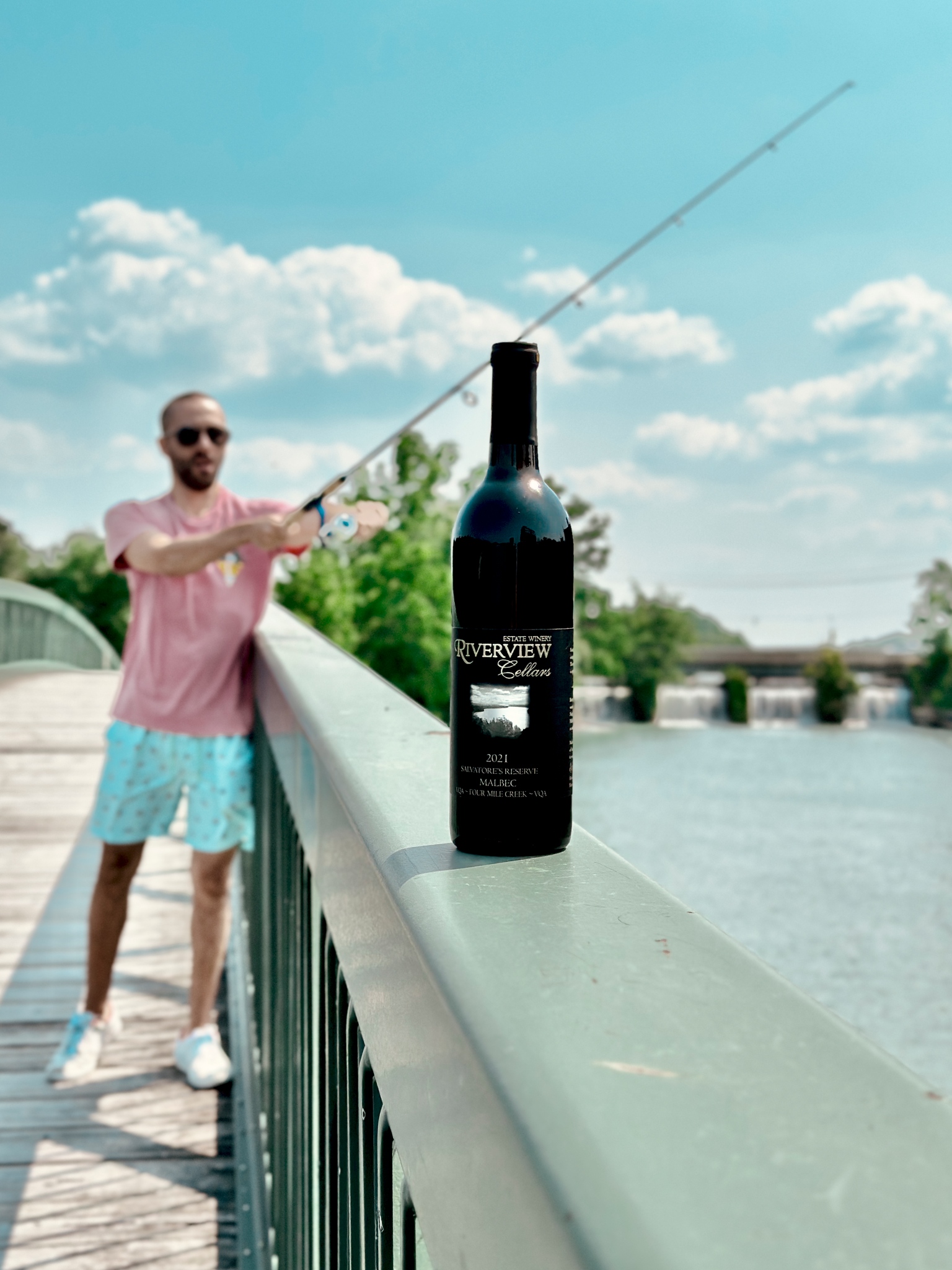
Malbec is a thin-skinned grape and needs more sun and heat than either Cabernet Sauvignon or Merlot to mature. It ripens mid-season and can bring very deep color, ample tannin, and a particular plum-like flavor component which adds complexity to Bordeaux blends.
It’s still a relatively rare varietal for Ontario, and Riverview sourced the Malbec for this wine from a local grower down the road from their Niagara Parkway winery with only one row planted. The grapes went through a gentle maceration of 5 days before being pressed in a combination of French and American Oak barrels (38% new) where it aged for 15 months.
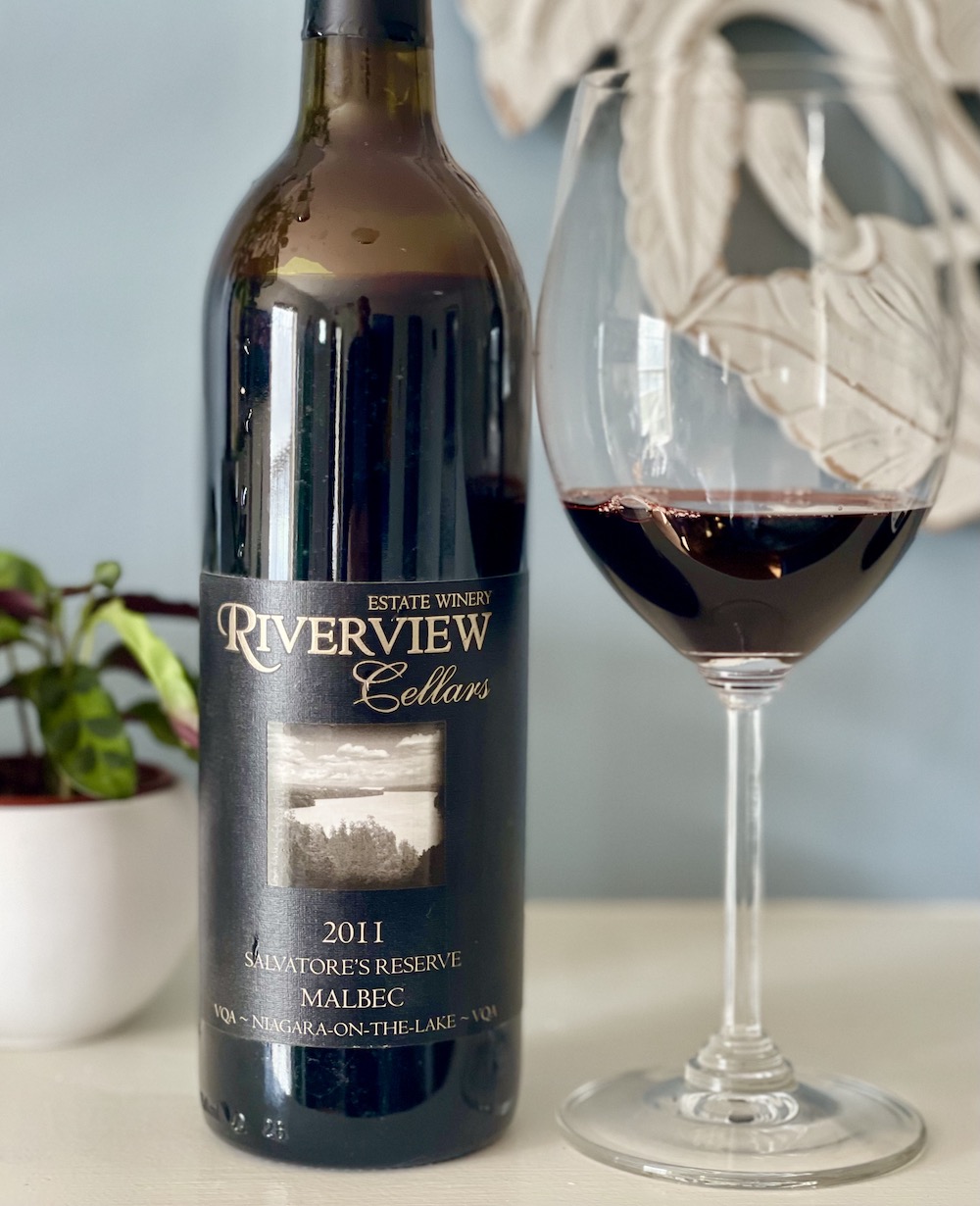
Riverview’s Reserve Series identifies its top wines from premium growing seasons. Named after proprietors Sam and Lina Pillitteri, reserve wines reflect family pride in viticulture and winemaking.
This appropriately aged Riverview Cellars Salvatore’s Reserve Malbec 2011, made by winemaker Angela Kasimos, has a complex and interesting nose of blueberry pie, black raspberries, anise, mocha, a touch of cassis, red licorice, plums and elegant spice notes. The tannins aren’t completely resolved and add structure to a big, rich mix of juicy black currants, wild blueberries, anise, and ripe red berries on the palate. There is underlying licorice, savoury spices, and a lively, vibrant finish. If you have some of this in your cellar, it’s drinking lovely right now or you can wait for further softening of the tannins.
With a cherry on top
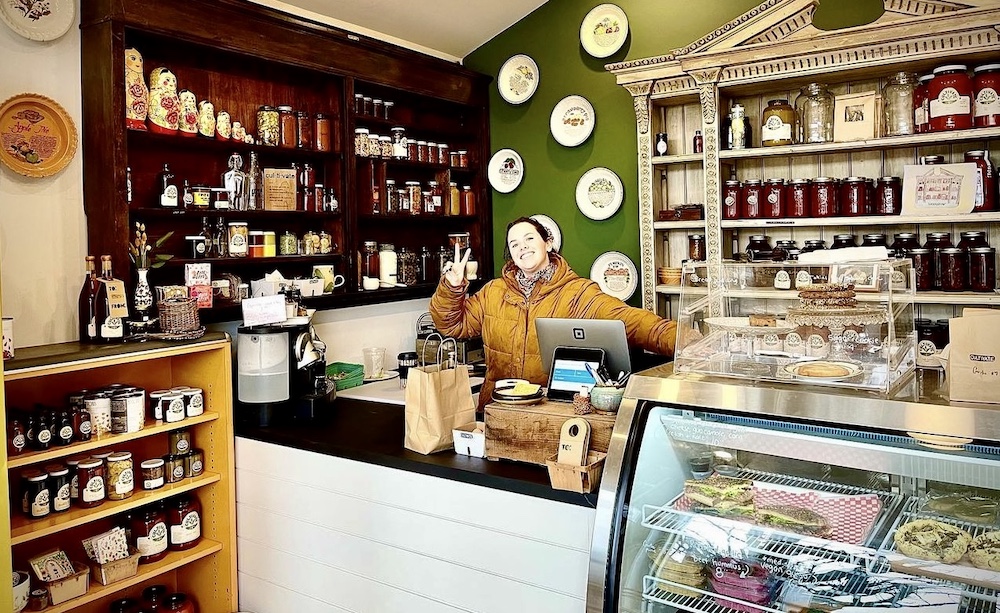
If nothing else, Niagara is a petri dish for experimentation, exploration and innovation that sometimes tests the boundaries of what can be done here.
If you have ever been to the Honsberger farm and winery in Jordan, you may have noticed one of the coolest shops in Niagara located right beside the retail store. The farm-to-table, culinary oasis named Cultivate Niagara is the brainchild of Britney Condotta (above), who tirelessly populates the shelves with an extraordinary selection of homemade jellies, farm-raised honey, maple syrup from the farm’s own trees and meats, including capicola, soppressata, prosciutto and salami. The cured meats are all made in-house. The list goes on with fruit wines, a variety of tomato-based pasta sauces, local meats, baked goodies, pickled everything all creatively curated and made from whatever is grown at the farm or sourced locally. If you haven’t been, you must check it out. It’s the epitome of good people doing good things.
On a visit to the shop nearly a year ago, a bottle of Black Cherry Wine 2021 caught my eye. Not a fan generally of fruit wines, I was curious what Condotta and her winemaker husband, Matt Smith (Honsberger and Cloudsley, among others) would bring to the table with a fruit wine.
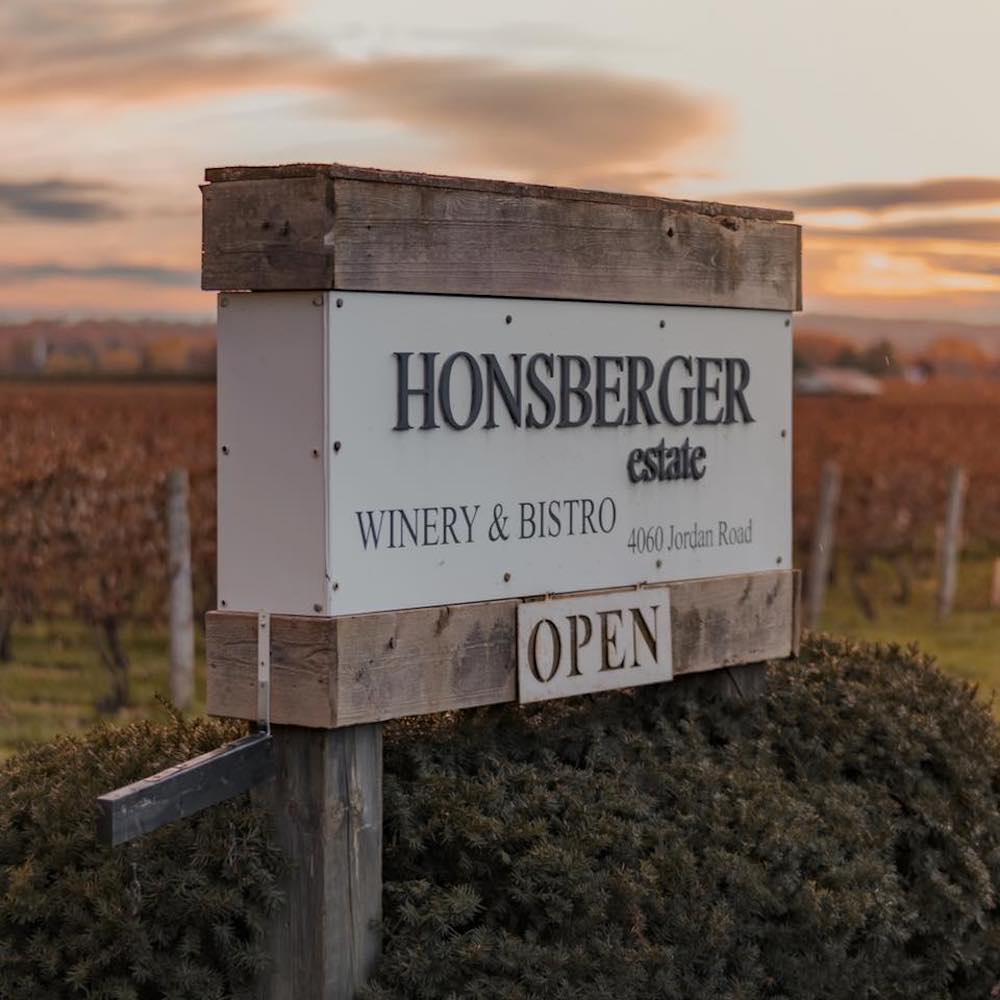
This is what Condotta had to say about the cherry wine: “A little fun fact is that we can make wine, this is a winery. Yep. And I hate waste. I love fruit, and if you add it all up and carry the one, you guessed it! I have a limited run of black cherry wine. Deeply rich and packed with intense cherry flavour after fermenting on stems and pits. These are the cherries that line the laneway when driving in. An absolutely perfect cocktail-mixer or mulling wine over the holidays. Pairing perfectly with orange, spice, cranberry and sage. With great assistance from (Smith). There’s no stopping what I’ll put in a bottle really.”
I believe the cherry wine is long gone now, but I reached out to Smith on how the wine was made. He said it was wild fermented and we diluted it with water, and it still got to 15% alc. I May do it again, but it was just one of those random experiments.”
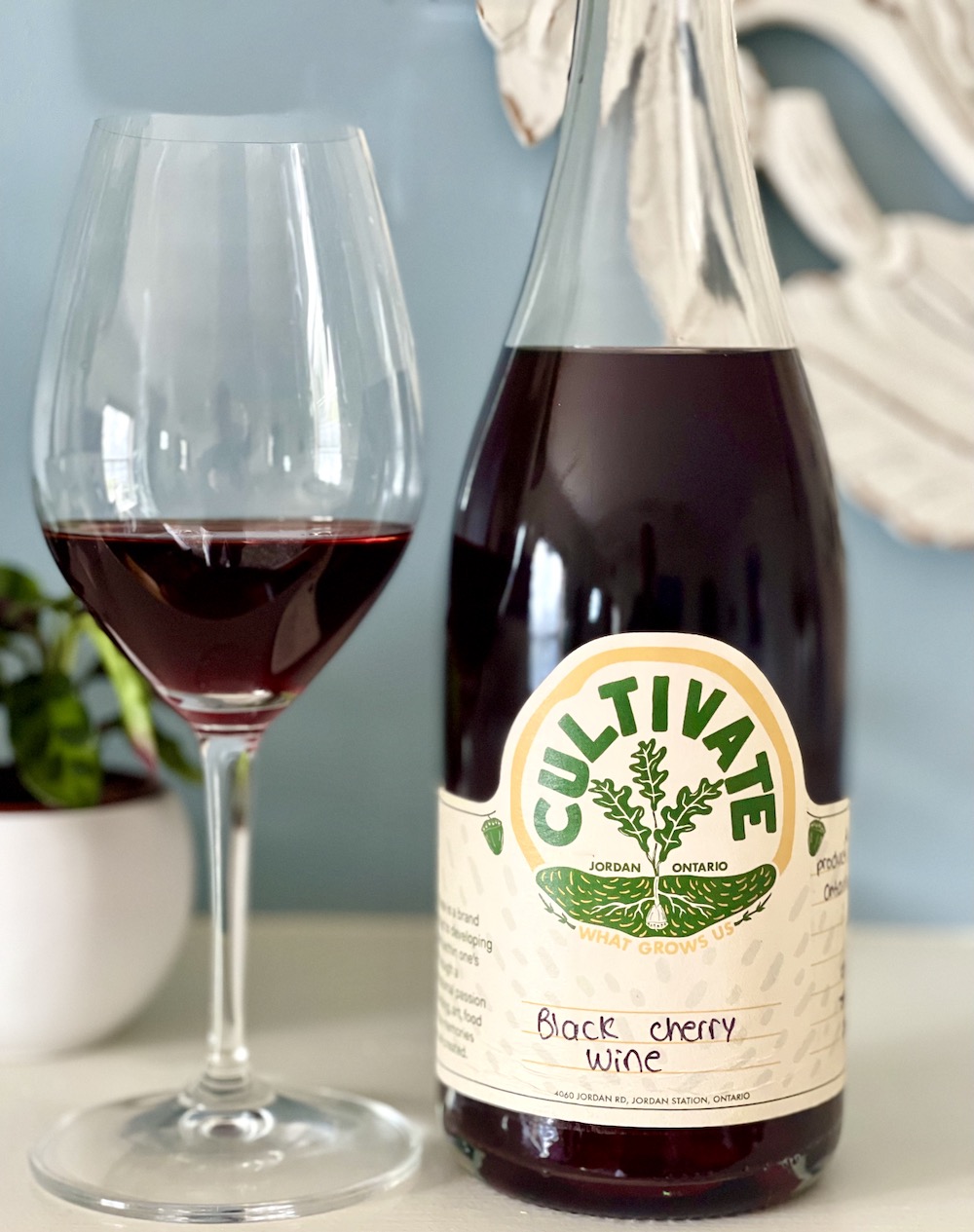
I chilled our bottle of the Cultivate Niagara Black Cherry Wine 2021 for my wife Maureen and I to taste. It poured a deep red colour in the glass and was layered with ripe black cherries (duh!) and kirsch notes with subtle pomegranate. It was thick and fleshy with pleasant sweetness, a touch of earth, umami, profound dark cherries, and moderate acidity. It really was as if someone went out to the orchard, pick ripe cherries, and squeezed them into a bottle, which is exactly what happened.
I really should have taken Condotta’s advice and gone with the cocktail-mixer or mulled wine suggestions. I can see now that is has a greater purpose than how we consumed it chilled and on its own. I kept thinking of a savoury dessert pairing, something like a chocolate zucchini loaf or maybe even a black forest cake.
They call me Mellow Yellow
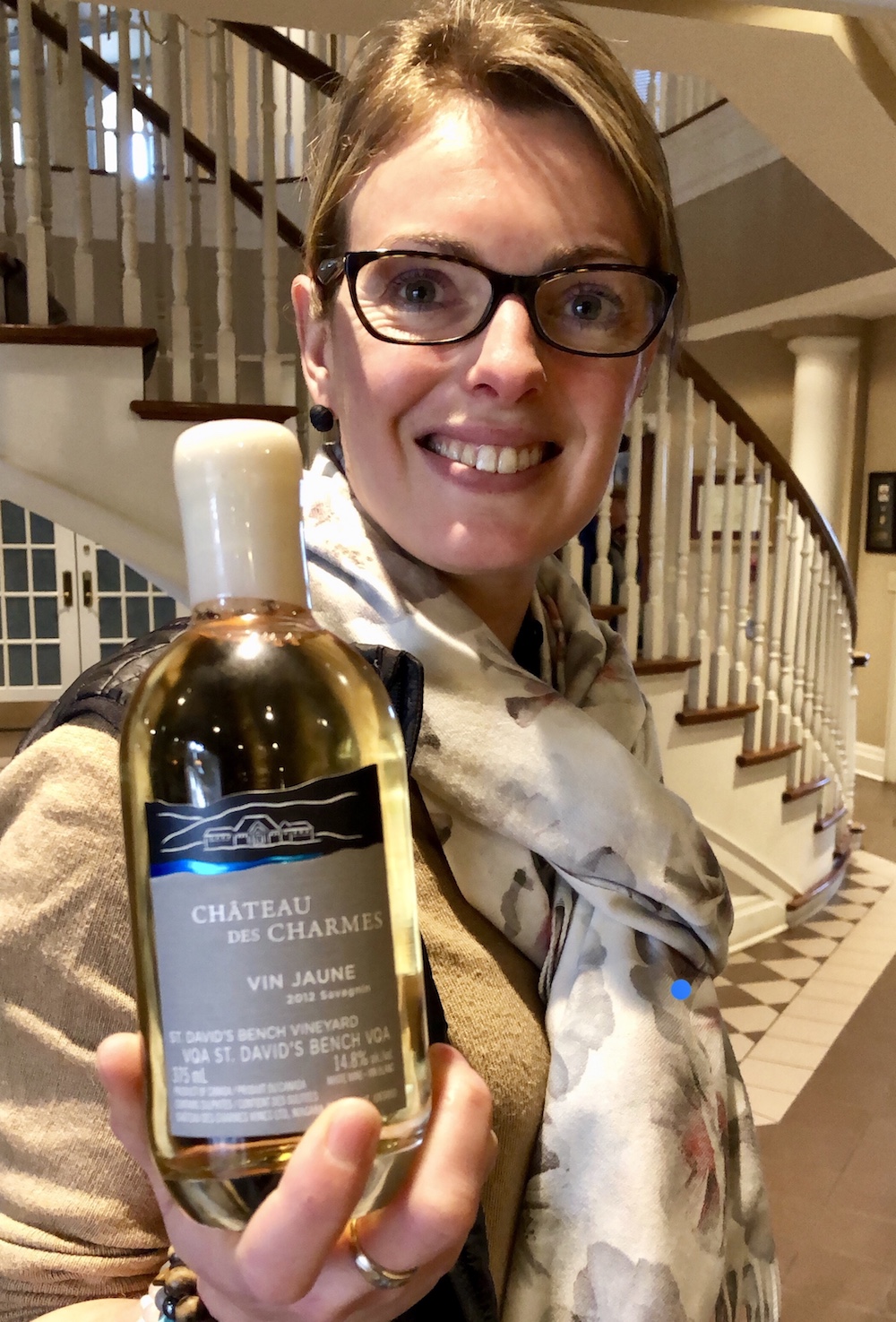
Talk about tenacity! When Chateau des Charmes winemaker Amelie Boury (above) embarked on a six-year journey to produce (as far as anyone knows) Ontario’s first Vin Jaune, a “yellow wine” made from estate Savagnin, a vinifera grape native to the Jura region of France, no one could predict the buzz it created and the work it took getting it into bottle.
As it turns out, the 2012 Chateau des Charmes Vin Jaune Savagnin is a rarity that has never been replicated and likely won’t ever again, at least at Chateau des Charmes.
“The 2012 Vin Jaune is the only vintage I made, for the simplest reason that I never thought it would be a wine appreciated,” Boury told Wines in Niagara recently. “It is a niche product, even in France, and to my biggest surprise, we sold out quickly. It took years to make and as I did not follow up right after the 2012 vintage was in process, I lost my voile culture. There is none in the making to this day.”
Boury has some estate Savagnin in barrels from the 2023 vintage that she hopes “will see the light of day sometime next year,” but it’s not made in the Jura style.
A few others make or did make Savagnin in the fresher style, including Rosewood, Big Head, and Megalomaniac, but only Chateau des Charmes made it in the incredibly complex “yellow wine” style.
The estate only has 10 rows of Savagnin planted in its St. David’s Vineyard, on the west side of the Chateau, so Boury had to convince Paul Bosc Sr. to allow her to experiment. “I had the chance to spend time in Jura in the summer of 2012 and I came back thinking ‘I have Savagnin at CdC, I want to give this a try and see if I can make it!,’ ” Boury told Wines In Niagara when it was initially released.
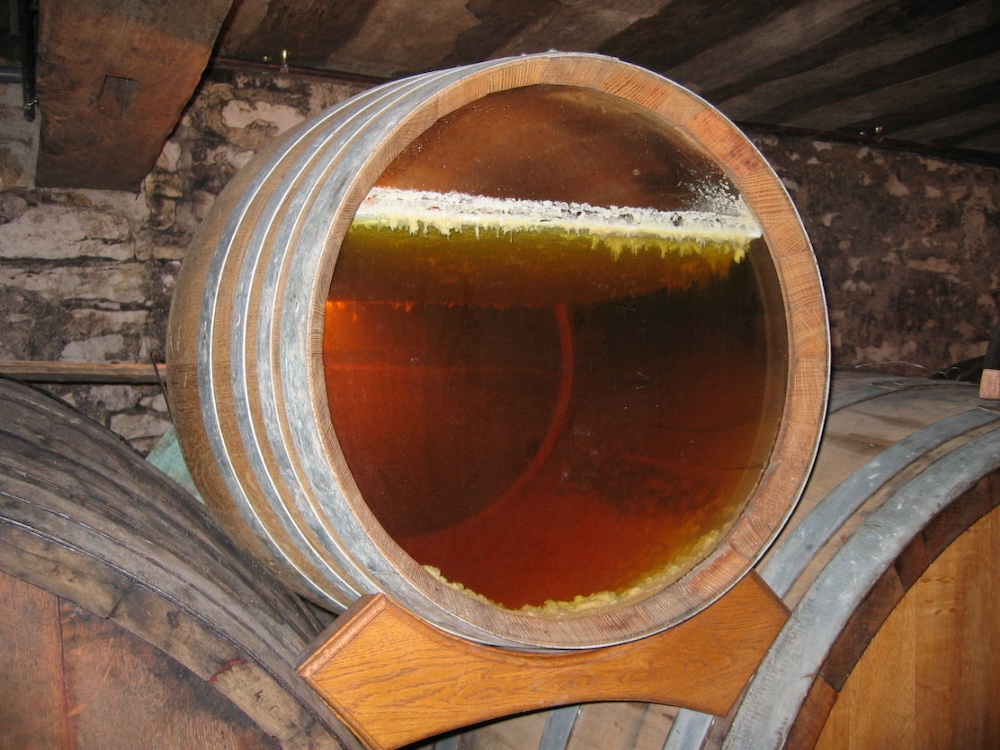
When she approached Bosc, it turns out he had spent time in Jura and had experimented on making sherry-style wines when he was much younger. He was all for Boury embarking on the long journey to make Niagara’s (Canada’s??) first Vin Jaune.
Traditional Vin Jaune is made from Savagnin that’s been aged under a veil of yeast or ‘voile’, protecting it from over-oxidation and giving it its characteristic flavours, which Boury describes as “very fresh and clean with lots of yellow apple, straw, and nuts on the flavour profile, with bracing acidity, and a long mineral finish.”
Her Vin Jaune is made from extremely ripened Savagnin grapes placed in a 228-litre Burgundian barrel for six years and three months. What is especially unique in the winemaking process, said Boury, aside from the extended aging time, is that the barrels are not stored in a stable cellar environment, instead they are stored in spaces which are well ventilated and subject to temperature fluctuations. Her two barrels were placed in the press room, where the temperature fluctuates with the seasons.
The barrel is never topped off as it is done throughout the traditional winemaking process, which allows a yeast film to develop in the barrel, called “le gout du jaune” or voile.
“It is very challenging to maintain the quality of the wine and keep the voile intact during the six-year aging process and if the film is torn, the contents of the barrel are destroyed.” After 6 years in barrel, more than 40% of the initial volume evaporates.
I knew this wine needed aging when I bought a bottle upon release in 2019 ($50 for a 375 mL bottle), as most Jura wines last decades and decades. It was staring enticingly at me for quite a while in the cellar and I decided to open it for this report.
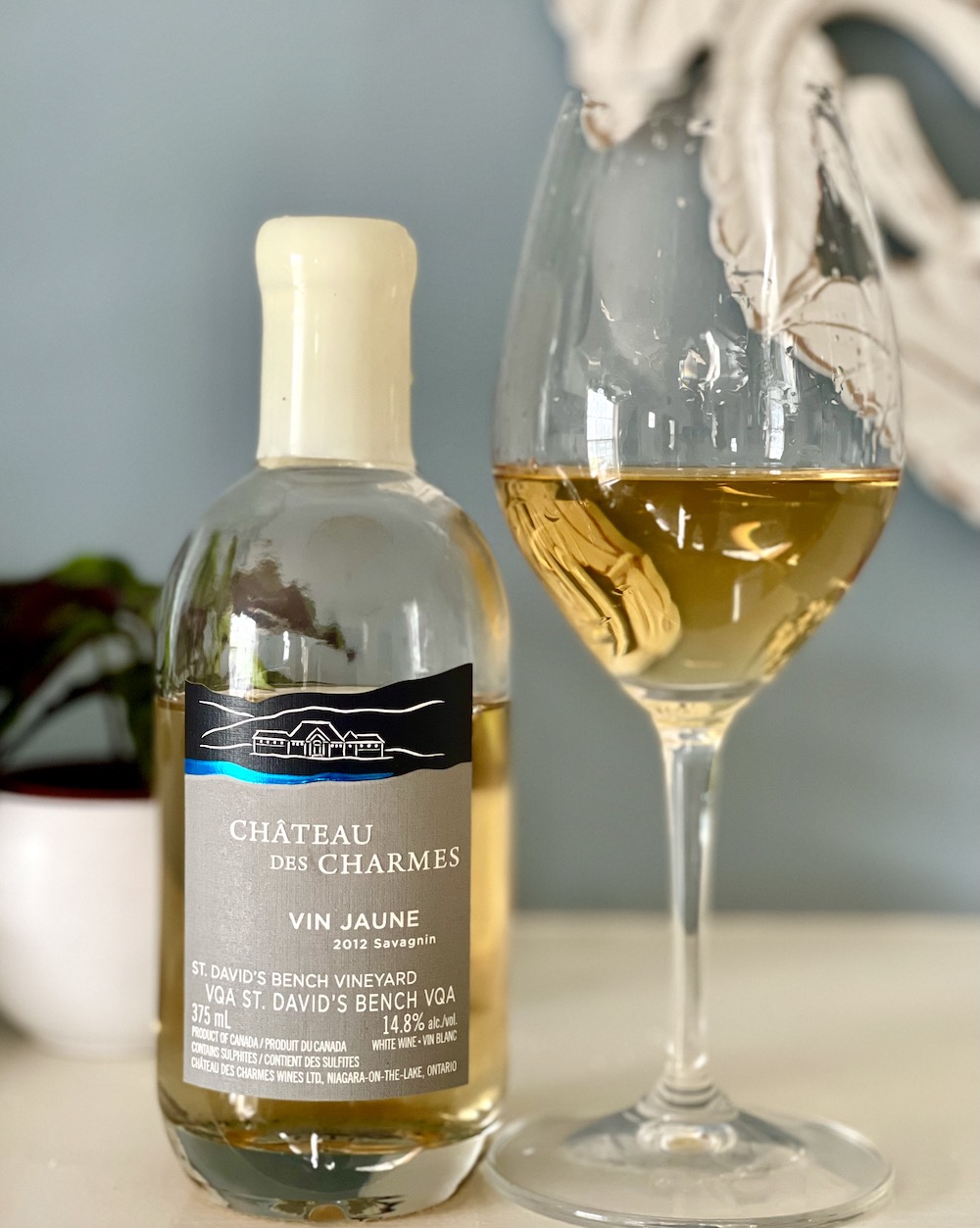
My initial review notes reference a similarity to fino sherry with notes of honeysuckle, white pepper, salinity, flinty minerality, bread, lemon verbena, subtle nuttiness and cream. The acidity on the palate was nervy and electric, which gives this wine such a tangy, lemon zesty profile in support of grapefruit, crushed stones, umami, earthiness, roasted almonds, and dried apricots that is all together focused and poised to age into a blockbuster of a wine that is so unlike any other. In retasting it five years later, the development is stunted, it was much the same as I originally tasted it. Perhaps more grassy/herbaceous notes, a richer golden colour, some honey sweetness emerging with umami, green almonds, citrus pith, brioche, and a bit of astringency and bitterness on the finish that wasn’t there when I tasted it in 2019.
Without question it’s one of the most ambitious, nerve-wracking (for the winemaker), and quirky wines ever made in Niagara. And now, a rarity never to be repeated.
Coming to Vintages stores Feb. 17
Here are two Niagara wines from the LCBO Vintages release coming up on Saturday.
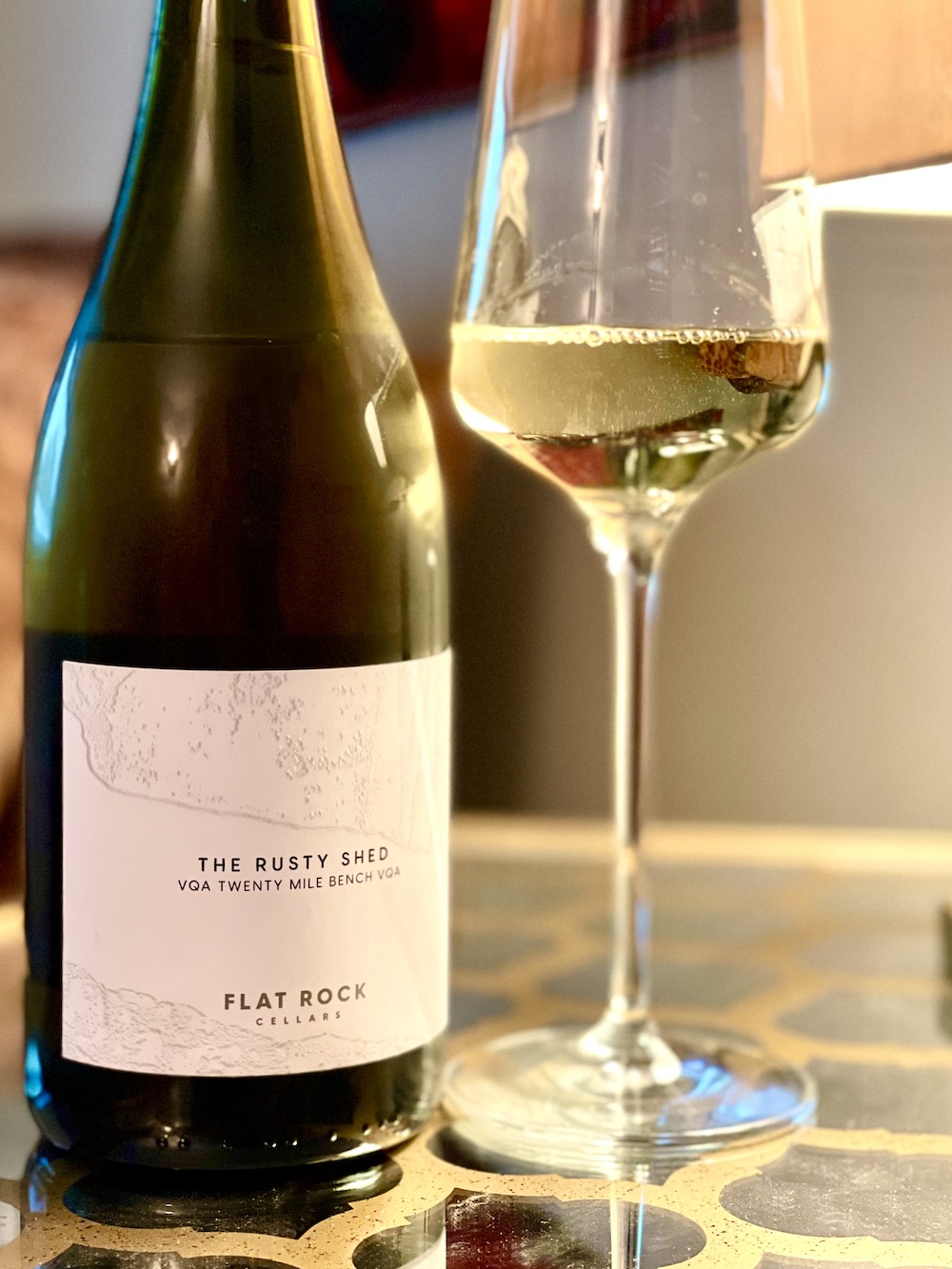
Flat Rock Cellars The Rusty Shed Chardonnay 2020 ($35, 93 points) — The Rusty Shed is multi-block blend of the best barrels of Chardonnay at the estate. It’s aged in a variety of French oak barrels, 18% of which are new barrels. Such an elegant nose of flinty minerality, baked pear, crisp apple, integrated oak spices and a kiss of vanilla and lemon zest. It’s rich and creamy on the palate with ripe orchard fruits, flinty/stony notes, toasted vanilla bean, lavish spice notes, buttery/creamy accents, elegant spices and a pure and lifted finish. Very fine Chardonnay from a great vintage. Can cellar 5+ years.
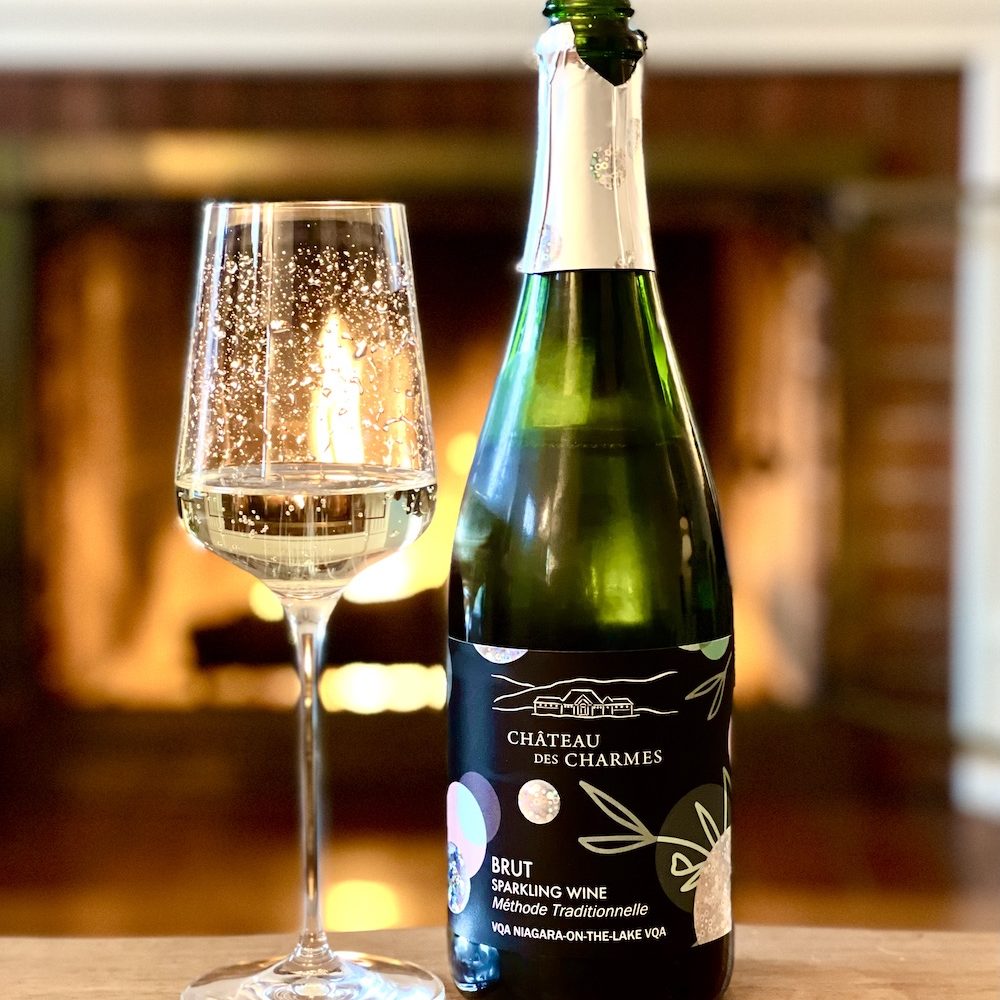
Chateau des Charmes Brut Sparkling NV ($26, 91 points) — This estate bottled sparkling wine is a classic blend of Chardonnay and Pinot Noir made in the traditional method. It’s bottled on the lees for a minimum of one year. It shows an elegant bead in the glass with notes of fresh lemon/citrus, baked bread, green apples, and toasty notes. The bubbles are gentle and persistent in the glass with some flinty notes, sharp citrus, pear/apple, and tingly acidity on a lifted finish. Great value bubble here.
Also released but not reviewed by Wines in Niagara:
• 13th Street Expression Series Pinot Grigio 2021 ($20)
• Reif White Meritage 2021 ($25)
• Rockway Vineyards Unoaked Chardonnay 2022 ($20)
• 13th Street Cabernet/Merlot 2021 ($25)
• Creekside Iconoclast Syrah 2020 ($25)
• Domaine Queylus Tradition Cabernet Franc 2021 ($35)
• EastDell Pinot Noir 2017 ($19)
• Frogpond Farm Organic Gamay Noir 2019 ($19)








Opened a Lailey Cab. Sauvignon. 2007 the other day. It was brilliant. Great colour still with some sediment. Layers of flavours!
I bet it was awesome! 2007s still going strong. I remember ordering an amazing old Niagara wine (vintage escapes me) at the Charles Inn you recommended. It literally changed my mind about older vintage Niagara wines.
I really miss the Alvento wines, I had quite a few and drank them all way too early….mostly because I didn’t think they wouldn’t be around….
Jason, me too! I just couldn’t imagine a winery such as Alvento getting into the trouble they did. I’m very very close to my last bottle, maybe two left. That will end the Alvento chapter, sadly. Rick